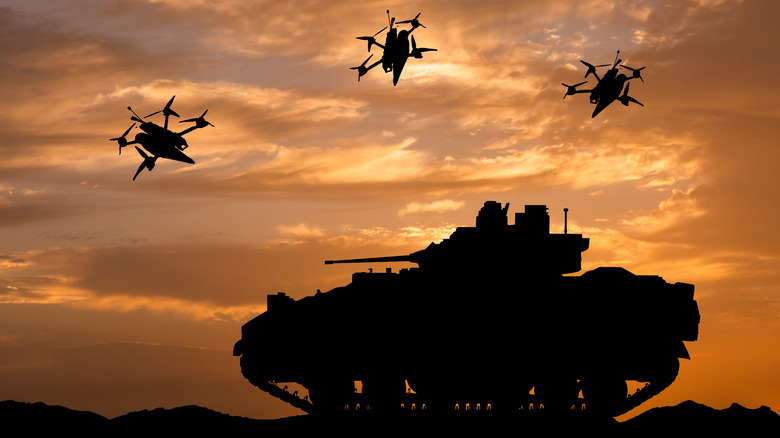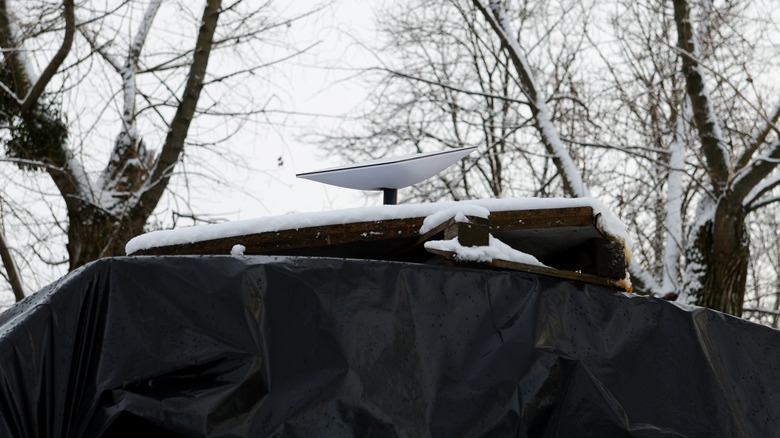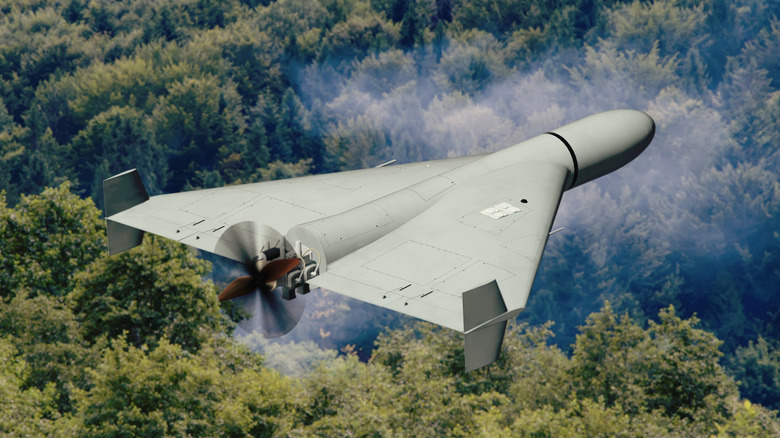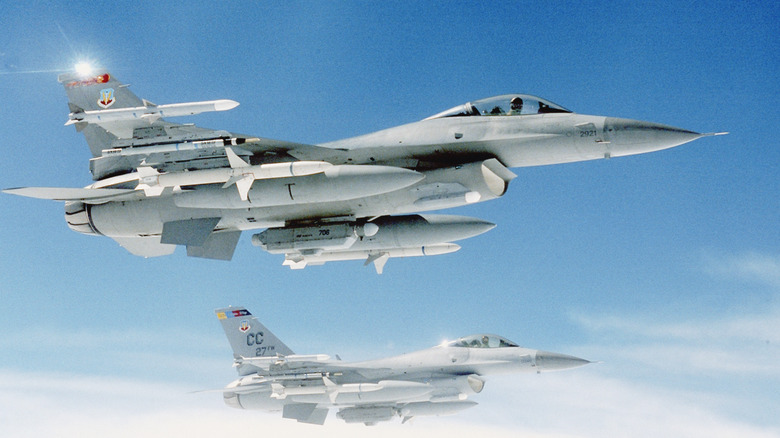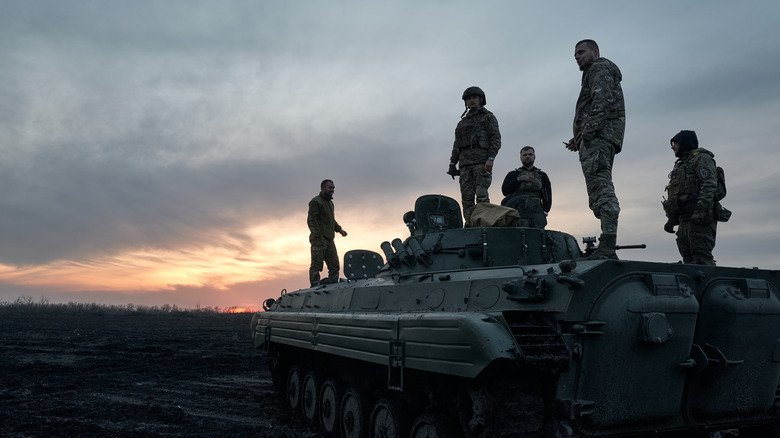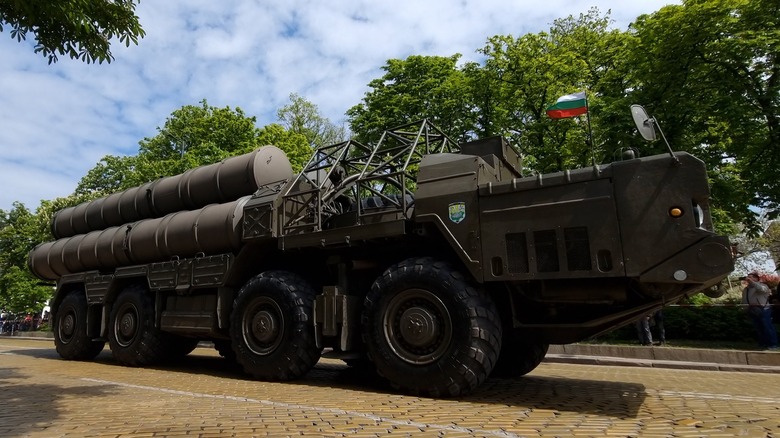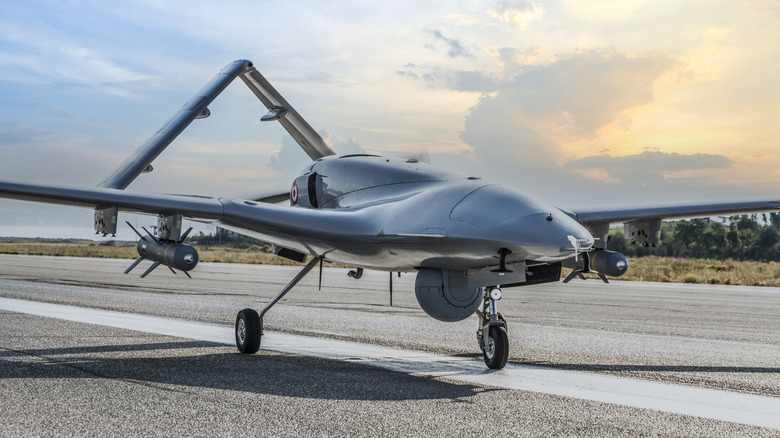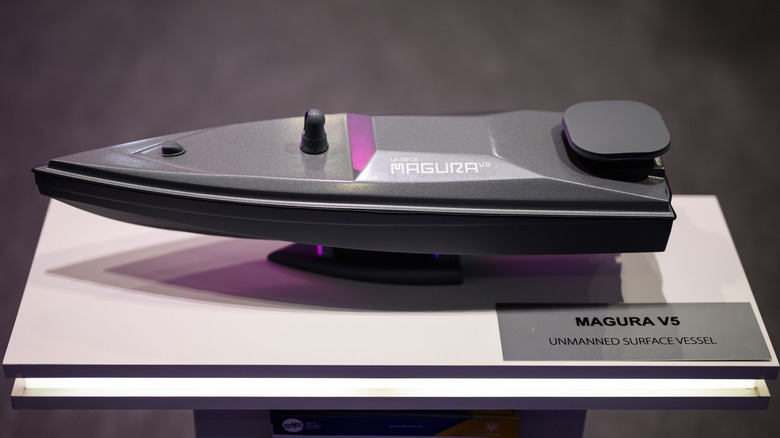High Tech Tools In The Ukraine War: Here's How They Work
We may receive a commission on purchases made from links.
The Russo-Ukrainian War has raged on since February 24, 2022. It is Europe's largest conflict since World War II ended in 1945. But unlike WWII, this war has seen some extremely technologically advanced military systems.
With the backing of the Western powers, Ukraine has been mired in the conflict since repelling Russia's initial stab at Kyiv. Russia has one of three most powerful militaries in the world (among the U.S. and China), but it has struggled to gain ground. Ukraine exhibited a shocking willingness to resist in the open combat that ensued. Stories about which military systems and packages the Ukrainians will receive have dominated news cycles.
The bottom line is that the Ukrainians seem willing to fight for their home with everything down to a wooden spoon. In this modern war, everything from mobile missile systems to electronic store drones has proven critical to the fight. We look at some of the high-tech tools in the Ukraine War and how they're being used.
Starlink
Elon Musk has been in the news for many reasons, not the least because he supplied his Starlink system to the Ukrainian military. Armies fight on "bullets, beans, and Band-Aids" is a quaint way of saying logistics. It may seem strange to think of the internet as a logistical need, but it is. Military operations need the internet like they once (and still do) needed fuel. Everything from communications to navigation relies on it.
Back in the dark ages, computers needed a physical connection. Today, they can use Wi-Fi. Starlink is like that jump from the modem to the router. It uses a series of low-earth orbiting satellites to provide broadband internet virtually anywhere in the world, including the battlefields of Ukraine. Starlink's effort is part of the burgeoning commercial space economy, just one service provided by the final frontier.
Some experts say the ground war in Ukraine resembles World War I, but high above, the buzz of drones lets the enemy know that it is not 1916 anymore. Both sides have a full suite of military toys that best use internet access.
Ukraine uses the Starlink connection to maintain a drone war against the Russian invaders. Aside from surveillance, Ukraine has recently used its resources to launch offensive operations within Russia.
Clearview AI Facial Recognition
Full-scale militaries have no problem finding targets, but finding the correct targets can be tricky. Battlefields are chaotic, and combatants can be hard to identify. The situation can be especially difficult when the civilian population is involved. Displaced persons may lie about their true intentions, or someone unsavory may be hiding within the diaspora.
Fingerprints were once the standard, but biometrics have proven to be the next step in identification science. Clearview offered its services, which are targeted at first responders and those in combat zones, and the Ukrainian government wholeheartedly accepted them. More than 18 government agencies use the facial recognition service.
Clearview has gathered an incredible database of images that can help identify individual soldiers and personal details simply with a picture of a face when interfaced with social media. Ukraine has used the technology to man security checkpoints, identify wanted persons, locate missing children, and identify dead combatants.
Iranian Shahed-136 Drone
Russia still has a few friends around the world willing to supply weapons. Iran didn't mind lending out Shahed drones if it meant someone would throw them vaguely toward the West. The U.S. military classifies them as a loitering munition unmanned aerial vehicle. But they should be called what they are: kamikaze drones.
The Shahed is a sizable aircraft with a wing span of seven feet and a speed of 115 mph. Unlike the tiny handheld machines used for surveillance, the Shahed-136 can be heard on the approach. It earned the nickname "moped" for the buzzy sound of its engine on approach.
Ukraine claims Russia launched nearly 2,000 Shaheds at Ukraine as of 2023. Initially, rear anti-aircraft units defended critical areas, but Russia changed its approach by flying higher. They can fly up to 15,000 feet, weigh up to 440 lbs, and are not made to return. They carry up to 88 pounds of explosives, capable of enormous destruction against military and non-military targets.
Russia has taken over building the Shahed from Iran, signaling that it may have used most of the original amount acquired from Iran. Nonetheless, Iran continues to invest in the drone. An upgrade, Shahed-238, is reportedly in operation, able to fly double the speed of sound.
General Dynamics F-16 Fighting Falcon
Every Cold War aviation is familiar with this aircraft. The F-16 first flew onto the scene in 1979. It was designed to take on Soviet MiGs over the skies of Europe. Well after the fall of the Soviet Union, it may finally get its chance. Several F-16 fighter jets have been dispatched to the warzone in Ukraine.
The unromantic truth is that there will not likely be thrilling Top Gun-style dogfights in the skies over Kyiv. The F-16s will be used to defend Ukrainian cities from Russian bombings, such as those from the Shahed.
The F-16 may have been introduced in the 1970s, but the U.S. Air Force has done a marvelous job of evolving and maintaining this workhorse fighter plane. The F-16 not only remains a viable weapon, but it could prove an enormous boon for Ukraine.
Belgium, Denmark, the Netherlands, and Norway have come together to supply 90 F-16s to Ukraine.
Boyevaya Mashina Pekhoty (BMP)
Speaking of a Cold War relic, the Soviet BMP was once known as Russia's primary infantry fighting vehicle. Russia has been reaching deep into its bag of war chest to equip its soldiers. At first, the main line tanks took the field, but most of the older stuff is still fighting.
Ukraine has also been reaching into that bag. As a former piece of the Soviet Union, it has a lot of experience with older Russian weapon systems.
The first BMP was introduced in the late 1960s as a 13.5-ton light-armored vehicle with a 73-mm turret-mounted cannon and 20-mm autocannon, which could carry seven crew members. In the 1980s, the Soviets upgraded to the BMP-2 by arming it with a 30-mm cannon, and later, the BMP-3 received a 100-mm missile launcher.
The open portion of the war in Ukraine has been going on for two years. Both sides have thrown immense amounts of materiel into the battle. When the Russians lose a vehicle, the Ukrainians repair it and send it back into battle. Both sides scrounge the battlefield for parts for damaged BMPs. The desperation is such that several generations of vehicles litter the fields of Ukraine. It's clear both sides will make the most of what they have.
Missile Systems
One way in which the Ukraine War resembles World War I is that it is a missile war. Back in 1914, the missiles were massive artillery shells. Today, they are missiles that fired from complex, often mobile systems.
The U.K. and the U.S. have pledged thousands of short-range missiles to Ukraine to defend against Russia. Other suppliers of weapons and equipment include Germany, Denmark, the Netherlands, Sweden, and France.
Many of the systems are based on air defense. The U.S. is working with European countries to develop an S-300 surface-to-air missile system. The Russians have a similar system, and both sides have been lobbing missiles at each other over the border.
Ukraine has also received M777 howitzer artillery pieces, 82 HIMARS missile systems, and long-range missiles from France and the U.K. The U.S. has also supplied an ATACMS capable of striking at a 190-mile range.
Bayraktar TB2
One of the greatest threats posed by Russia's technological attack was owning the skies.
The Ukrainian military answered by using a Turkish war machine to observe the enemy and direct fire on them during those first uncertain months of the war. However, this particular drone cannot fight an entire air force as sophisticated as Russia's. The Bayraktar TB2 dominated the headlines because it scored some sensational hits early in the war when good news was desperately needed, and Russia did not yet have air defenses set up.
Russia has adapted to the drone's presence in the battlespace, demonstrating the dynamic nature of military strategies. As a result, the Bayraktar is not the star it once was. However, for a brief period, it served as a stopgap measure against what looked like an overwhelming force. The drones are unmanned, of course, so they hardly strike with the effect of the pilots sacrificing themselves during the Battle of Britain. However, the Ukrainian people are no less beholden to the Bayraktar drone for staving off disaster in the early days of the conflict. Flying at medium altitude, the craft was both a useful surveillance asset and an attack drone.
Magura V5
Drones are not just for the air. Military units like the U.S. Navy SEALs use all kinds of vehicles, including submersible drones, in their undersea shenanigans too. The Ukrainians have taken that idea to heart in developing the Maritime Autonomous Guard Unmanned Robotic Apparatus V-5 (MAGURA V5).
The MAGURA V5 can operate against Russian ships. It is unmanned and at work in the Black Sea, a critical theater of the war between Russia and Ukraine. The Black Sea is the body of water on which the Crimean Peninsula sits and provides access to the Mediterranean Sea via the Bosporus Strait.
The torpedo can also operate as a reconnaissance craft, communicate with similar craft to conduct swarming attacks and move at a maximum speed of 62 mph and a cruising speed of 28 mph. It is 18 feet long, 5 feet wide, and has a range of 450 nautical miles.
The unmanned MAGURA uses Starlink communication antennas to receive and transmit information. When close to shore, it also uses the Starlink to maintain a communication channel with a terrestrial GPS.
Ukrainian naval forces used the MAGURA V5 to sink a Serna-class landing craft and an Akula-class landing craft in February 2024.
